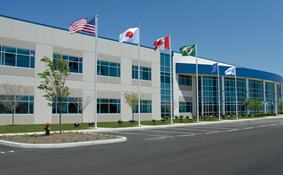 Earlier this summer, Sen. Luke Kenley (R-Noblesville) announced his plans to retire from the Indiana Senate on September 30 after a quarter century representing constituents in Hamilton County.
Earlier this summer, Sen. Luke Kenley (R-Noblesville) announced his plans to retire from the Indiana Senate on September 30 after a quarter century representing constituents in Hamilton County.
Kenley is the longtime chair of the powerful Senate Appropriations Committee, which is responsible for that chamber’s budget-writing proposal.
Governor Eric Holcomb said of the news: “Few understand the intricacies of Indiana’s finances like Luke Kenley. He has been an essential state-budget architect for years and years, and he is widely respected for both his expertise and his no-nonsense approach to lawmaking. Even though he is moving on to the next chapter in his life, many will continue to seek his counsel – including me. So, even though he won’t be in the Senate Chamber come January, and he’ll have a little more time to spend at his ranch in Texas, he will continue to contribute to our state’s success in countless ways.”
Indiana Chamber President Kevin Brinegar, himself a Noblesville resident and constituent of Kenley’s, offered these remarks:
“We were sorry to learn that Sen. Kenley has chosen not to serve his full term; it is undoubtedly a loss for Senate Republicans and the collective body. Senator Kenley brought his vast experience as a lawyer, judge and small business owner to his service and has been an outstanding and model public servant.
“He has been a strong conservative force on fiscal policy matters and that has served our state very well. Senator Kenley has also proven to be an attentive legislator and during his tenure was involved in virtually every important piece of policy and legislation to move Indiana forward and enhance our prosperity.
“It’s been my pleasure and honor to work with him over these many years. I’m proud to call Luke Kenley my friend and wish him the best in his retirement.”
On a related note, Sen. Ryan Mishler (R-Bremen) was appointed in mid-July to take over chairmanship of the Senate Appropriations Committee.

 SMC Corporation of America
SMC Corporation of America Historically,
Historically,  A recent press release from
A recent press release from 
 In CNNMoney.com’s 2009 list of Best Places to Live for small(ish) towns, the top 50 featured two Hoosier burgs — Brownsburg (33rd) and St. John (48th).
In CNNMoney.com’s 2009 list of Best Places to Live for small(ish) towns, the top 50 featured two Hoosier burgs — Brownsburg (33rd) and St. John (48th). A heartfelt congrats and thanks to the winners of prestigious awards last night at the Indiana Chamber’s 19th Annual Dinner:
A heartfelt congrats and thanks to the winners of prestigious awards last night at the Indiana Chamber’s 19th Annual Dinner: What do you like best about Hamilton County? The Fishers Freedom Festival? The table phones at the Noblesville Pizza King? Josh McRoberts?
What do you like best about Hamilton County? The Fishers Freedom Festival? The table phones at the Noblesville Pizza King? Josh McRoberts?